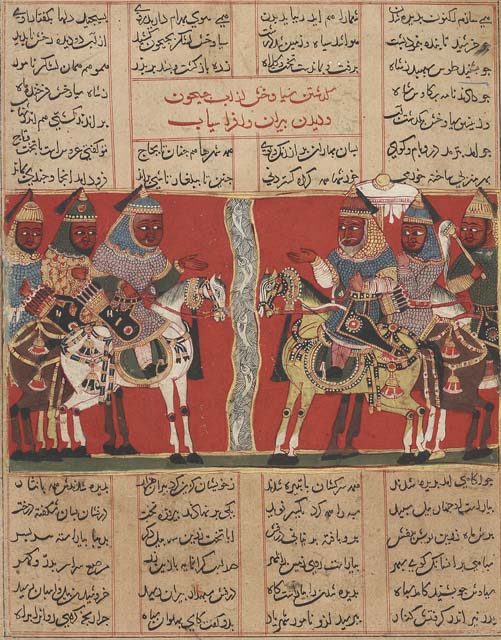
Wonder of the Age and the Nameless Indian Master Artists
Dispelling the notion of anonymity in Indian art, ‘Wonder of the Age’ highlights the work of these painters, many identified for the first time. This exhibition was conceived by three noted scholars of Indian painting, Dr. Milo Beach, Eberhard Fischer and B.N. Goswamy. Putting it into actuality were John Guy, Florence and Herbert Irving Curator of the Arts of South and Southeast Asia at the Metropolitan Museum of Art, and Jorrit Britschgi, Curator of Indian Painting at the Museum Rietberg in Zurich who also jointly prepared the catalog.
Their work is based on the continuing work of over 30 art historians who have helped to shine a light on several of these unknown, nameless artists, identifying over 40 of them through a study of their lineages and relationships, and even a study of individual hands responsible for bodies of work.
These works of great Indian painters have been drawn from major collections worldwide, including The Queen’s Collection from Windsor Castle, National Museum of India, New Delhi, Bodleian Library, Oxford, the Aga Khan Trust in Geneva, the Museum of Islamic Art in Doha and the Musee Guimet in Paris. In fact the works from India came from four different museums in Varanasi, Udaipur, Mumbai and Delhi. Just the thought of so much precious art, much of it fragile, coming together in one show in New York is impressive, and was a challenging feat to accomplish.
These artists are some of the greatest artists of Indian painting and each could lay claim to the titles the Mughal Emperors had reserved for their most prized painters – Nadir-alasr, which means Wonder of the Age and Nadir ul-zaman, Wonder of the times. These were the titles Jehangir had bestowed upon his favorites, Ustad Mansur and Abu’l Hasan respectively.
As Britschgi and Guy point out, “The connoisseurship of Indian painting has been shaped by the preferred medium of expression – small scale manuscript illustrations or larger format independent folios. The former lend themselves to private contemplation and enjoyment, to be shared with an intimate circle within a prince’s audience room or private apartment, or in the zenana with the ladies of the house…others served as templates for mural paintings intended for these interiors. This was an art reserved for the enjoyment of the elite.”
The inspiration for these works, especially during the reign of the three Mughal emperors Akbar, Jahangir and Shah Jahan, came from so many different sources – ambassadors, traders, travelers and missionaries poured in from different parts of the world and each one brought influences from their own world into the royal court.
The court artists were commissioned by the royals to document the history and life of the court in images, and they worked in the royal workshops, alongside scribes and librarians creating a pictorial record of the age. Painters were also established in other cities in branch workshops and created manuscript paintings recording everything from festivals and court life to the realities of warfare. They often traveled to battle zones, not unlike the war correspondents of today, to document real life events, though from the perspective of their royal patrons.
Under the Mughals, there was not only a fusion of the styles of Hindu and Muslim artists resulting in the distinctive Mogul art, but Iranian and Western influences also crept in from the European paintings and engravings Akbar used to collect and have copied in his imperial workshops.
Writes John Guy in the very informative ‘Wonder of the Age: Master Painters of India’: “These sources had an immediate impact on the direction of Mughal painting, providing new solutions to perspective and atmospheric rendering, tonal modeling and chiaroscuro, grisaille, and other modeling tools. Portraiture, especially the studied profile, took on a new importance as a signature motif of the Imperial image.”
Walking through this comprehensive exhibition at the Metropolitan Museum of Art in New York, you find that the feast of art which was once reserved for just the eyes of royalty is now open to everyone. The six gallery rooms painted in opulent Indian shades cascade one into the other, and are decorated with Mughal inspired stonework jallis which give you a peep into what’s happening in the next room.
